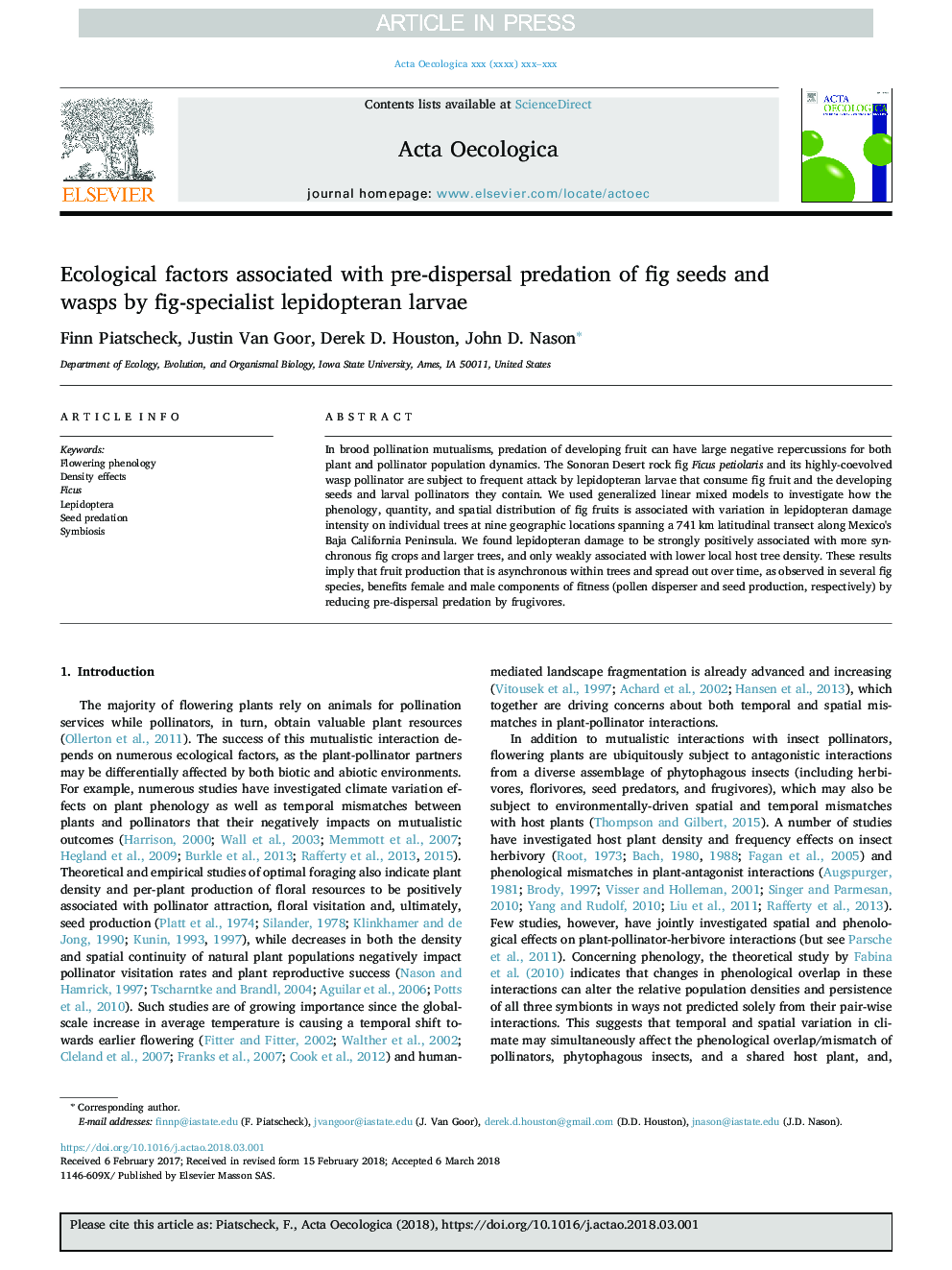| Article ID | Journal | Published Year | Pages | File Type |
|---|---|---|---|---|
| 8846493 | Acta Oecologica | 2018 | 9 Pages |
Abstract
In brood pollination mutualisms, predation of developing fruit can have large negative repercussions for both plant and pollinator population dynamics. The Sonoran Desert rock fig Ficus petiolaris and its highly-coevolved wasp pollinator are subject to frequent attack by lepidopteran larvae that consume fig fruit and the developing seeds and larval pollinators they contain. We used generalized linear mixed models to investigate how the phenology, quantity, and spatial distribution of fig fruits is associated with variation in lepidopteran damage intensity on individual trees at nine geographic locations spanning a 741â¯km latitudinal transect along Mexico's Baja California Peninsula. We found lepidopteran damage to be strongly positively associated with more synchronous fig crops and larger trees, and only weakly associated with lower local host tree density. These results imply that fruit production that is asynchronous within trees and spread out over time, as observed in several fig species, benefits female and male components of fitness (pollen disperser and seed production, respectively) by reducing pre-dispersal predation by frugivores.
Related Topics
Life Sciences
Agricultural and Biological Sciences
Ecology, Evolution, Behavior and Systematics
Authors
Finn Piatscheck, Justin Van Goor, Derek D. Houston, John D. Nason,
